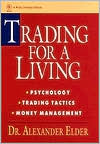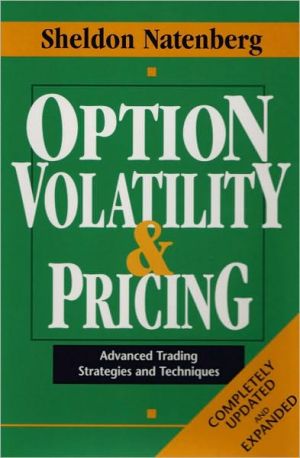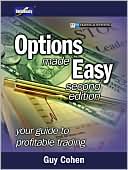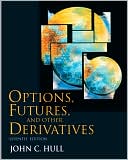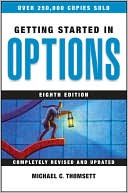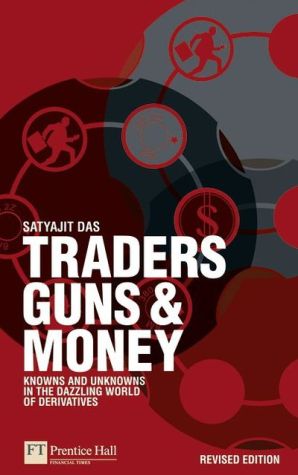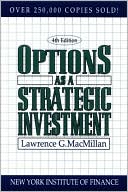Trading for a Living: Psychology, Trading Tactics, Money Management
Trading for a Living Successful trading is based on three M's: Mind, Method, and Money. Trading for a Living helps you master all of those three areas:\ \ How to become a cool, calm, and collected trader\ How to profit from reading the behavior of the market crowd\ How to use a computer to find good trades\ How to develop a powerful trading system\ How to find the trades with the best odds of success\ How to find entry and exit points, set stops, and take profits\ \ Trading for a Living helps...
Search in google:
Trading for a Living Successful trading is based on three M's: Mind, Method, and Money. Trading for a Living helps you master all of those three areas: * How to become a cool, calm, and collected trader * How to profit from reading the behavior of the market crowd * How to use a computer to find good trades * How to develop a powerful trading system * How to find the trades with the best odds of success * How to find entry and exit points, set stops, and take profits Trading for a Living helps you discipline your Mind, shows you the Methods for trading the markets, and shows you how to manage Money in your trading accounts so that no string of losses can kick you out of the game. To help you profit even more from the ideas in Trading for a Living, look for the companion volume—Study Guide for Trading for a Living. It asks over 200 multiple-choice questions, with answers and 11 rating scales for sharpening your trading skills. For example: Question Markets rise when * there are more buyers than sellers * buyers are more aggressive than sellers * sellers are afraid and demand a premium * more shares or contracts are bought than sold * I and II * II and III * II and IV * III and IV Answer B. II and III. Every change in price reflects what happens in the battle between bulls and bears. Markets rise when bulls feel more strongly than bears. They rally when buyers are confident and sellers demand a premium for participating in the game that is going against them. There is a buyer and a seller behind every transaction. The number of stocks or futures bought and sold is equal by definition. Library Journal Soviet-born author and practicing psychiatrist Elder (director, Financial Trading Seminars, Inc.) shares his learning over the years as a professional trader and expert in technical analysis and his principle of understanding the three Ms (Mind, Method, Money), which will strengthen the discipline required to be successful in trading. He explores crucial factors in the markets that most experts overlook, including time, volume, and open interest, and describes little-known indicators to track them profitably. In addition, he covers many of the more technical approaches to investing in futures, such as factoring in the meaning from the Elliott Wave, oscillators, moving averages, Market Logic, and point-and-figure charting. His unique viewpoints in this overly saturated genre explain his particular view that most traders sabotage themselves, while offering tips for others to avoid doing the same. The narration by Richard Davidson soundly guides the listener through this highly specialized work that, although first published seven years ago, remains recommended for university libraries supporting a finance and business curriculum.--Dale Farris, Groves, TX Copyright 2001 Cahners Business Information.
Introduction11Trading - The Last Frontier12Psychology Is the Key33The Odds Against You6IIndividual Psychology114Why Trade?115Fantasy versus Reality126Market Gurus177Self-Destructiveness248Trading Psychology279Trading Lessons from AA2910Losers Anonymous3311Winners and Losers38IIMass Psychology4312What Is Price?4313What Is the Market?4714The Trading Scene5115The Market Crowd and You5616Psychology of Trends6117Managing versus Forecasting65IIIClassical Chart Analysis6918Charting6919Support and Resistance7520Trend and Trading Range8021Trendlines8722Gaps9523Chart Patterns101IVComputerized Technical Analysis11524Computers in Trading11525Moving Averages12026Moving Average Convergence-Divergence (MACD) and MACD-Histogram12727The Directional System13528Momentum, Rate of Change, and Smoothed Rate of Change14229Williams %R15130Stochastic15631Relative Strength Index162VThe Neglected Essentials16732Volume16733Volume-Based Indicators17234Open Interest17835Herrick Payoff Index18336Time187VIStock Market Indicators19437New High-New Low Index19438Traders' Index and Other Stock Market Indicators201VIIPsychological Indicators20939Consensus Indicators20940Commitment Indicators215VIIINew Indicators22041Elder-ray22042Force Index227IXTrading Systems23543Triple Screen Trading System23544Parabolic Trading System24445Channel Trading Systems247XRisk Management25446Emotions and Probabilities25447Money Management25748Exiting Trades263Afterword269Acknowledgments271Sources275Index279
\ Library JournalSoviet-born author and practicing psychiatrist Elder (director, Financial Trading Seminars, Inc.) shares his learning over the years as a professional trader and expert in technical analysis and his principle of understanding the three Ms (Mind, Method, Money), which will strengthen the discipline required to be successful in trading. He explores crucial factors in the markets that most experts overlook, including time, volume, and open interest, and describes little-known indicators to track them profitably. In addition, he covers many of the more technical approaches to investing in futures, such as factoring in the meaning from the Elliott Wave, oscillators, moving averages, Market Logic, and point-and-figure charting. His unique viewpoints in this overly saturated genre explain his particular view that most traders sabotage themselves, while offering tips for others to avoid doing the same. The narration by Richard Davidson soundly guides the listener through this highly specialized work that, although first published seven years ago, remains recommended for university libraries supporting a finance and business curriculum.--Dale Farris, Groves, TX Copyright 2001 Cahners Business Information.\ \
